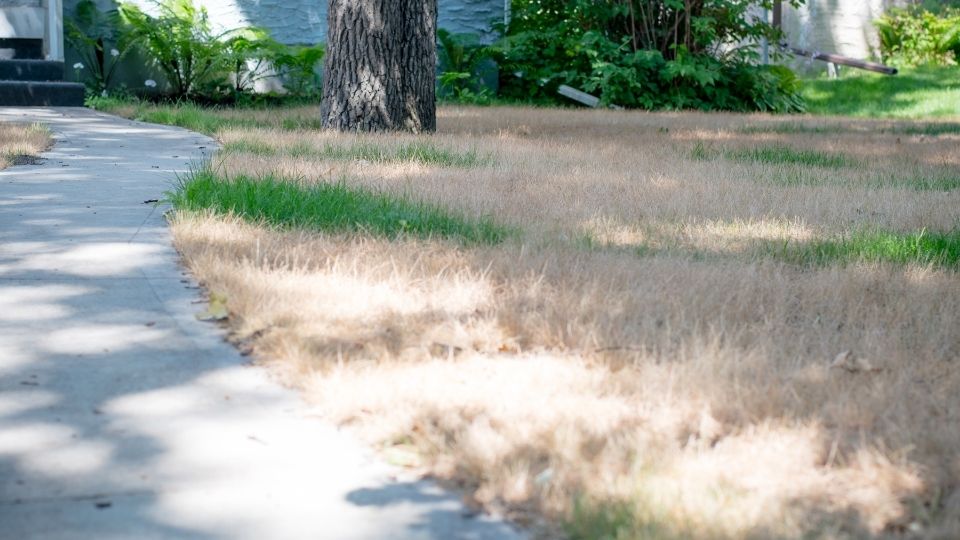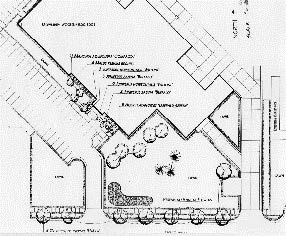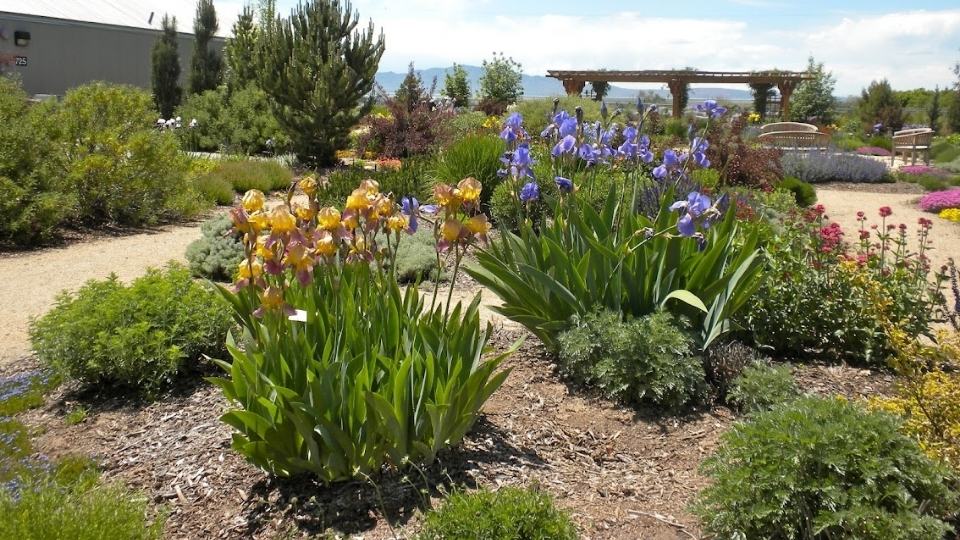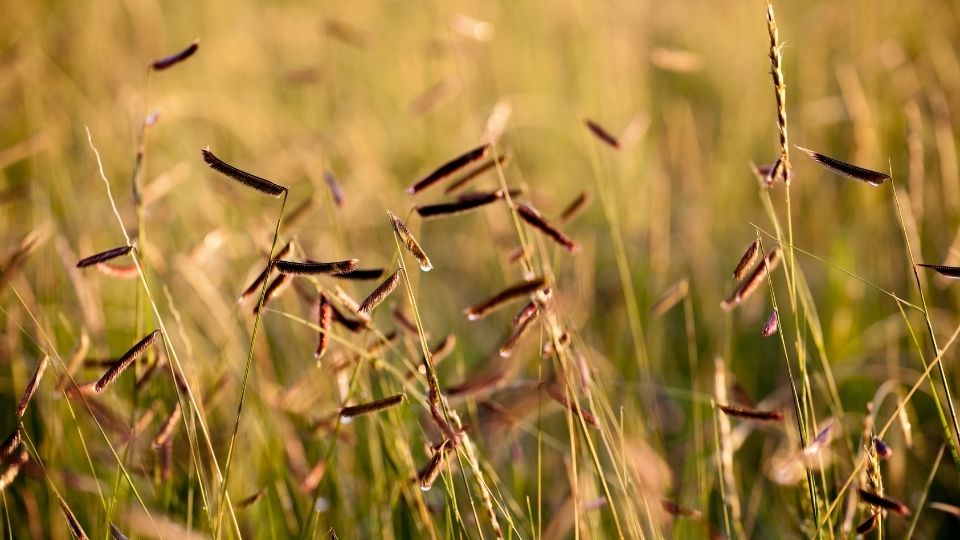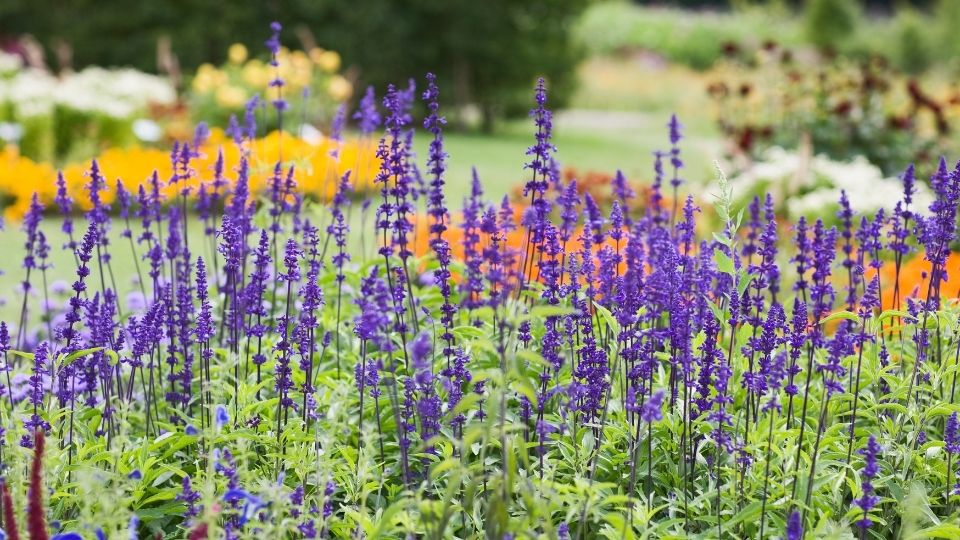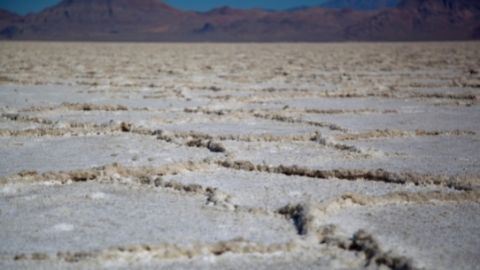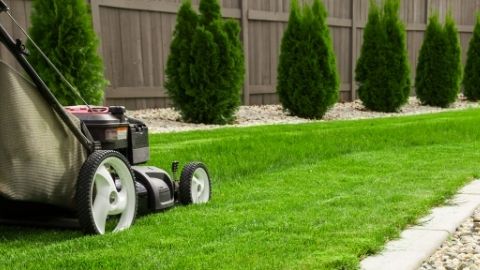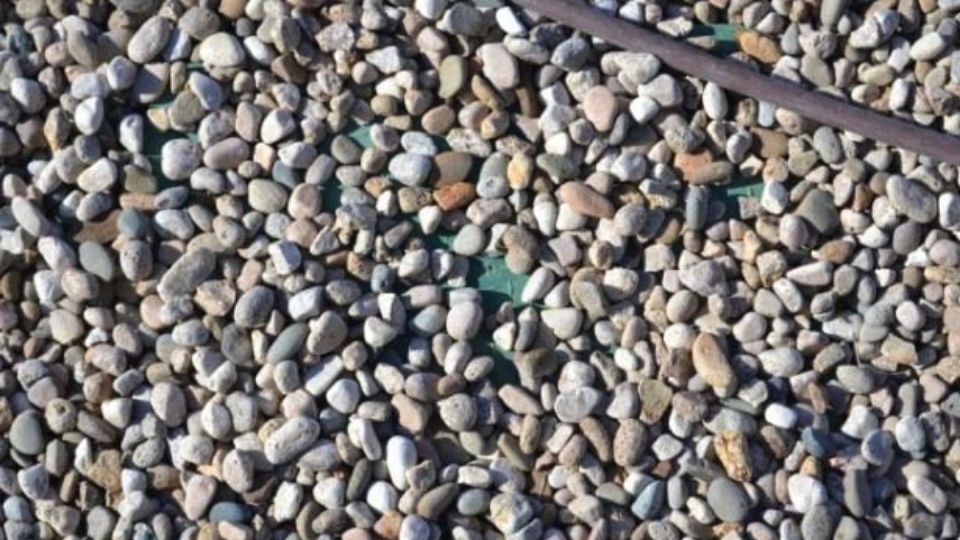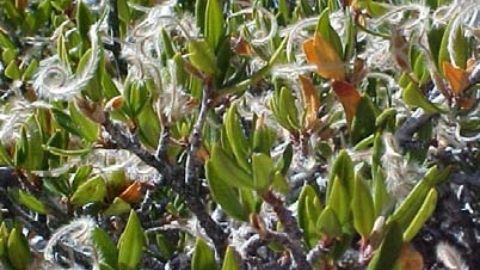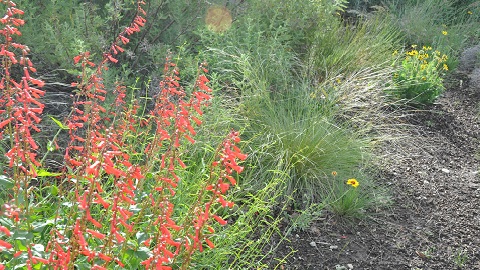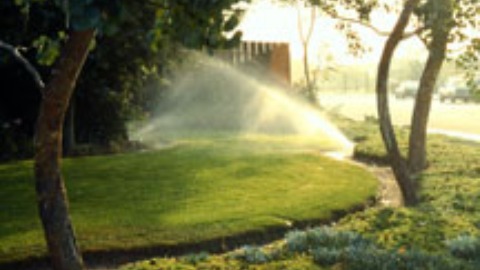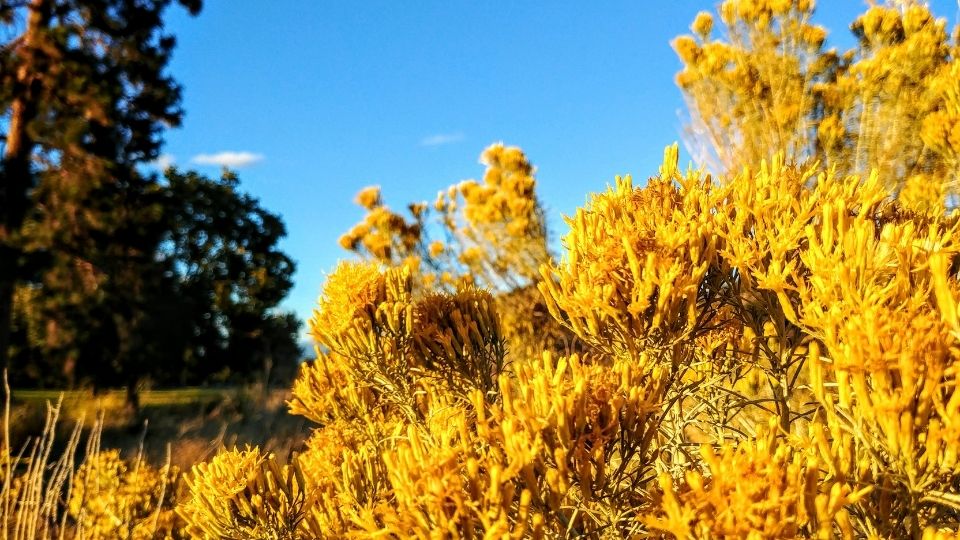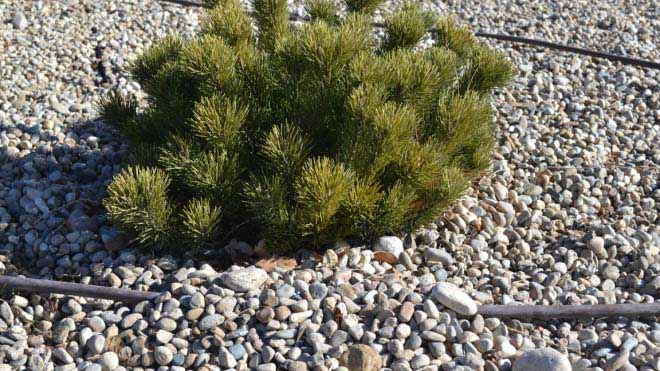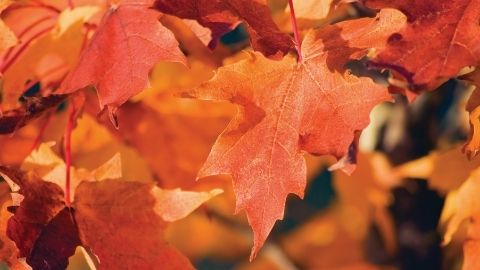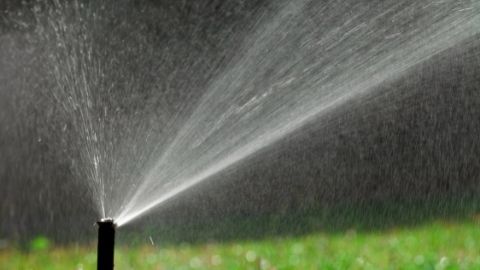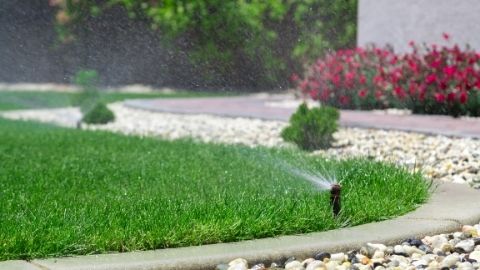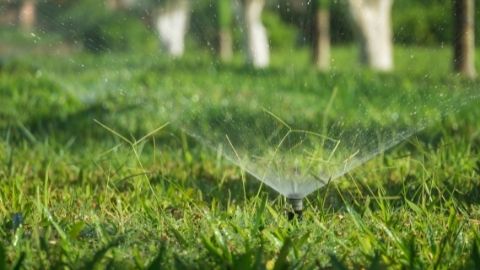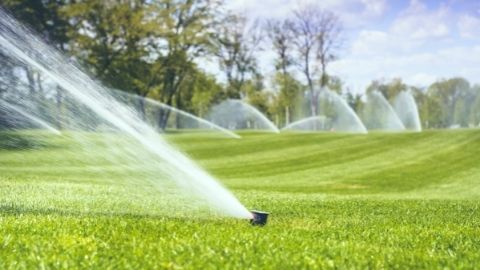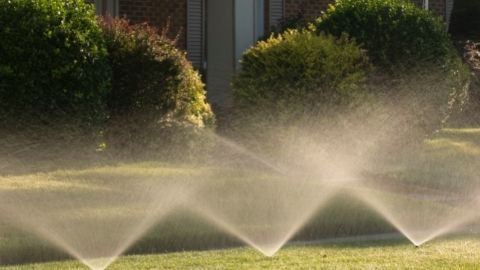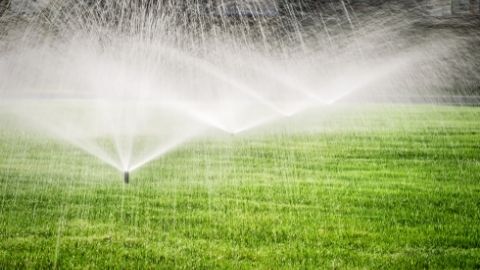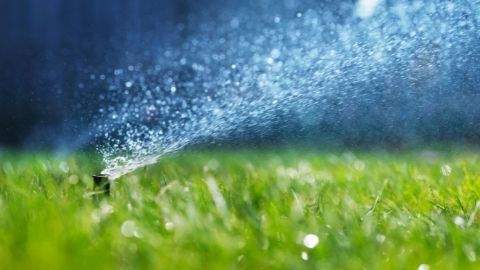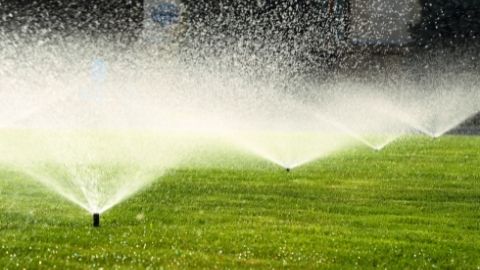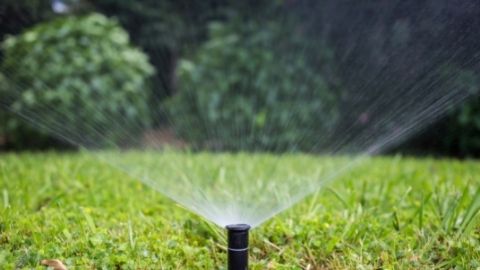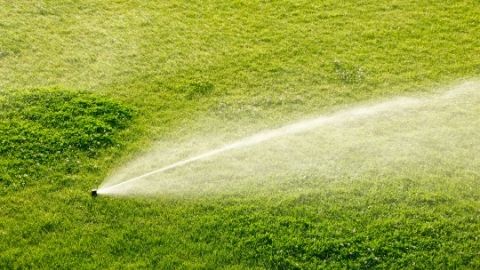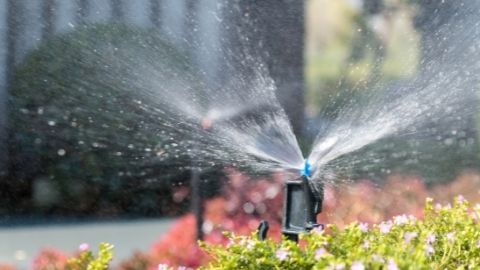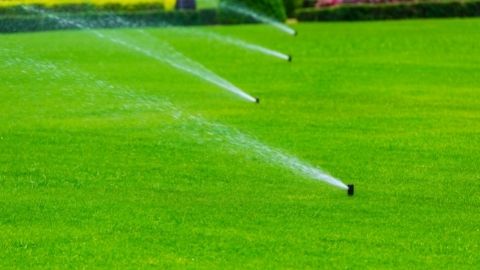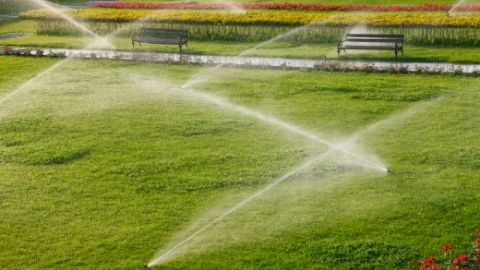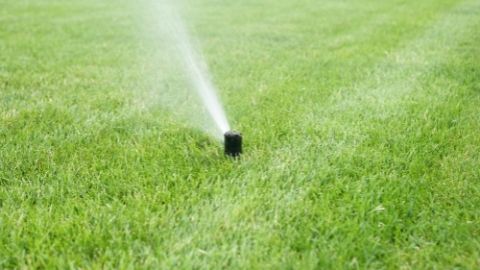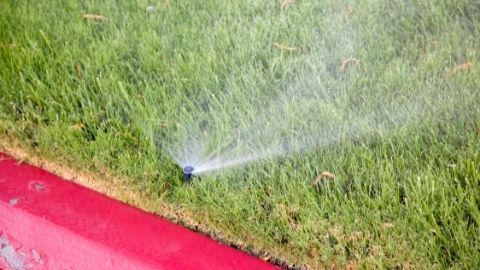Watering the Landscape: Make It Easier With Evapotranspiration (ET)
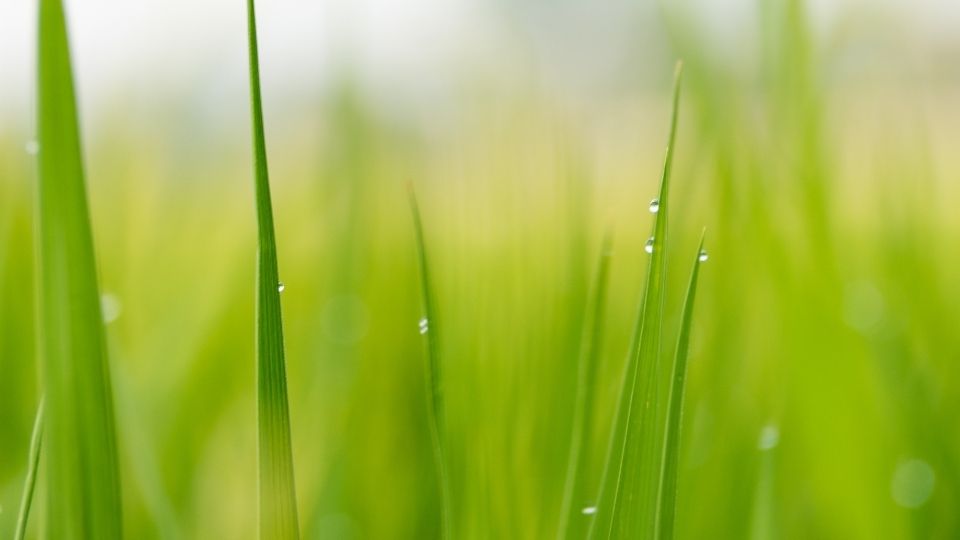
Horticulture | December 2020
The American lawn is our nation’s single largest irrigated “crop” (Lindsey, 2005). In Utah, roughly 65% of our drinking water is applied to residential and commercial landscapes (Center for Water Efficient Landscaping, 2020).
Landscapes are typically overwatered, which is why residential and commercial landscape watering is estimated to be one of the largest sources of potential water conservation in the urban setting (Endter-Wada et al., 2008).
Plant materials also provide many environmental benefits, such as erosion control, water filtration, and temperature reduction.
Knowing how much water to apply to the landscape can be a challenge and is one reason many Utah landscapes are over-irrigated.
One source of information that water managers frequently use to minimize over-application of water and dial in the water needs of plants is evapotranspiration (ET).
What is ET?
Calculating ET and plant water needs can get a bit complex, so for the purposes of this article, we’re going to keep things practical and applicable as we share several resources and irrigation tips. We can all agree that plants need water.
A plant’s water requirements are determined by how much water is lost through the combination of evaporation and transpiration, also known as evapotranspiration (ET). The speed at which water evaporates from the soil surface and plants transpire is affected by many factors such as plant type, temperature, wind, humidity, and more.
While the calculation of ET is complex, the application is simple and very useful. As temperatures increase, the plant’s water requirement increases and most plants will need more frequent watering.
When temperatures are cooler, ET decreases and we water less frequently. In short, plant water requirements change as the weather changes.
Statewide Resources
Adjusting an irrigation schedule to match changing weather conditions is not a typical practice of most homeowners.
In an effort to educate and reduce landscape water use, the state of Utah offers multiple statewide programs, most of which utilize ET in some fashion.
Slow the Flow is an educational campaign funded through the Governor's Water Conservation Team. Its goal is to connect Utahns to tools and resources like the Water Check program (Figure 1), weekly lawn watering guide, the statewide smart controller rebate program, and others. These programs complement each other and utilize ET to maximize water efficiency.
Water Check Program
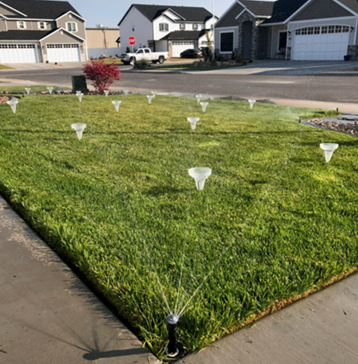
The Water Check program sends trained technicians to your home or business to perform a water audit of your irrigation system.
Their goal is to determine how long it takes your irrigation system to apply ½ inch of water and how evenly that water is applied. To accomplish this goal, the technicians do the following:
- Place specially designed cups across your law.
- Run the sprinkler system for 5–10 minutes.
- Perform some calculations.
- Provide you with a precipitation rate (how quickly your irrigation system applies water) and distribution uniformity (how evenly your irrigation system applies water).
This information can then be used to program a smart irrigation controller or translated into a runtime and used to program your standard irrigation controller. The calculated runtime won’t change during the growing season, but the frequency of irrigation will change as ET changes (remember, ET is affected by weather conditions).
Weekly Lawn Watering Guide
If you do not have a smart irrigation controller, the Water Check technician will either create a custom irrigation schedule for you, based on historic ET, or direct you to Slow the Flow’s weekly lawn watering guide. Both options are effective; please note that different counties use different methods.
The weekly lawn watering guide uses ET data to determine how many times a week you should be watering (that is to say, frequency). The lawn watering guide gathers weather data from weather stations located throughout the state and provides recommendations based on the prior week's weather conditions.
The goal is to apply the amount of water used by the plant (transpiration) and water lost through evaporation in ½-inch increments.
For example, if the lawn uses and loses ¼ inch of water daily (which is pretty typical during June and July in many parts of the state), the daily ET is ¼ inch and the weekly lawn watering guide will advise you to apply ½ inch of water every other day.
Weather data from weather stations located throughout the state and provides recommendations based on the prior week's weather conditions.
The goal is to apply the amount of water used by the plant (transpiration) and water lost through evaporation in ½-inch increments.
For example, if the lawn uses and loses ¼ inch of water daily (which is pretty typical during June and July in many parts of the state), the daily ET is ¼ inch and the weekly lawn watering guide will advise you to apply ½ inch of water every other day.
Why a ½ inch of water? For simplicity, the weekly lawn watering guide assumes your landscape has a typical residential soil texture (silty clay loam) which can hold 1 inch of available water in 6 inches of soil.
| Available Water Capacity by Soil Texture | |
|---|---|
| Textural Class | First Available Water Capacity (Inches/Foot of Depth) |
| Coarse Sand | .25-.75 |
| Fine Sand | .75-1.00 |
| Loamy Sand | 1.10-1.20 |
| Sandy Loam | 1.25-1.40 |
| Fine Sandy Loam | 1.50-2.00 |
| Silt Loam | 2.00-2.50 |
| Silty Clay Loam | 1.80-2.00 |
| Silty Clay | 1.50-1.70 |
| Clay | 1.20-1.50 |
Figure 2. Water capacity available in various soil textures. Most residential landscapes are a silty clay loam. Source: noble.org
One foot of soil can hold 2 inches of available water and so on (Figure 2). The majority of lawn roots are in the top 6 inches of soil.
Your goal as a lawn manager is to irrigate once 50% of the available water has been used or lost through ET.
Soil Testing
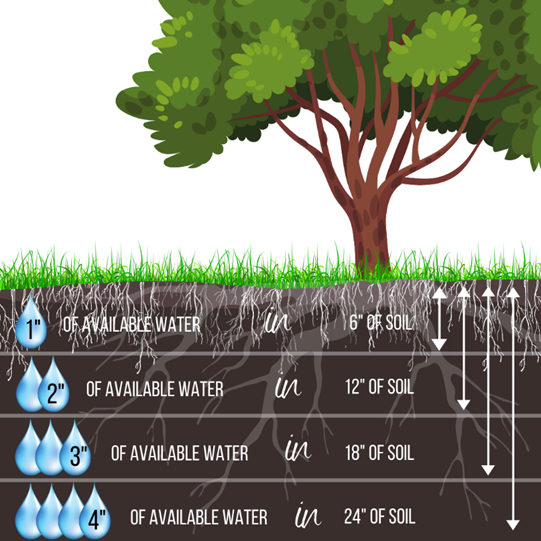
majority of turf roots are in the top
6 inches of soil, and tree roots are in
the top 18–24 inches. The graphic
highlights the amount of water a silty
clay loam soil texture can hold
at varying depths.
Water holding capacity varies by soil texture. Figure 3 illustrates the different water holding capacities for different soil types. For an accurate soil texture classification, mail soil samples to the Analytical Laboratories at Utah State University (USU).
Rebate Program
Smart irrigation controllers take irrigation scheduling one step further by communicating with local weather stations to determine the water lost and used by the plants (ET), which translates into irrigation frequency (how many times your system will run each week).
In order to program a smart irrigation controller correctly, you’ll need to know your system’s precipitation rate (how quickly water is applied). Determine this rate through a free Water Check (mentioned above), or on your own with the helpful instructions provided in USU’s Water Check factsheet.
Put simply, a smart controller is only as smart as the programmer. If the controller determines that your lawn has lost ½ inch of water (ET), but doesn’t know how long it takes your irrigation system to apply ½ inch (that is to say, precipitation rate), then you have lost one of the major efficiency aspects of the controller.
The Utah Division of Water Resources is currently offering a rebate on smart irrigation controllers. As of November 1, 2020, the rebate will cover 100% of the cost up to $75. To apply, visit Utah Water Savers.
Summary
Whether ET is calculated behind the scenes via the weekly lawn watering guide website or by your smart irrigation controller, it’s always a good idea to have a basic understanding of how these tools work and how they work together.
With no knowledge of your precipitation rate, you cannot effectively program a smart irrigation controller, or any irrigation controller for that matter. Without ET data, irrigation timing and frequency are simply a guess.
A basic understanding of ET is essential for homeowners to optimize plant water requirements and apply water conservation practices.
Happy watering!
NOTE: Photos and graphics are by Candace Schaible unless otherwise noted.
References
- Lindsey, R. (2005, November 8). Looking for lawns.
Earth Observatory. EOS Project Science Office, NASA Goddard Space Flight Center. http://earthobservatory.nasa.gov/Features/Lawn/lawn.php - Center for Water Efficient Landscaping. (2020). Principles of water wise landscaping [Website]. https://cwel.usu.edu/principles
- Endter-Wada, J., Kurtzman, J., Keenan, S.P., Kjelgren, R., & Neale, C. (2008). Situational waste in landscape watering: Residential and business water use in an urban Utah community. Journal of the American Water Resources Association, 44, 902–920. doi:10.1111/j.1752-1688.2008.00190.x
Authors
Candace Schaible, Kelly Kopp, and Helen Muntz
Related Research






